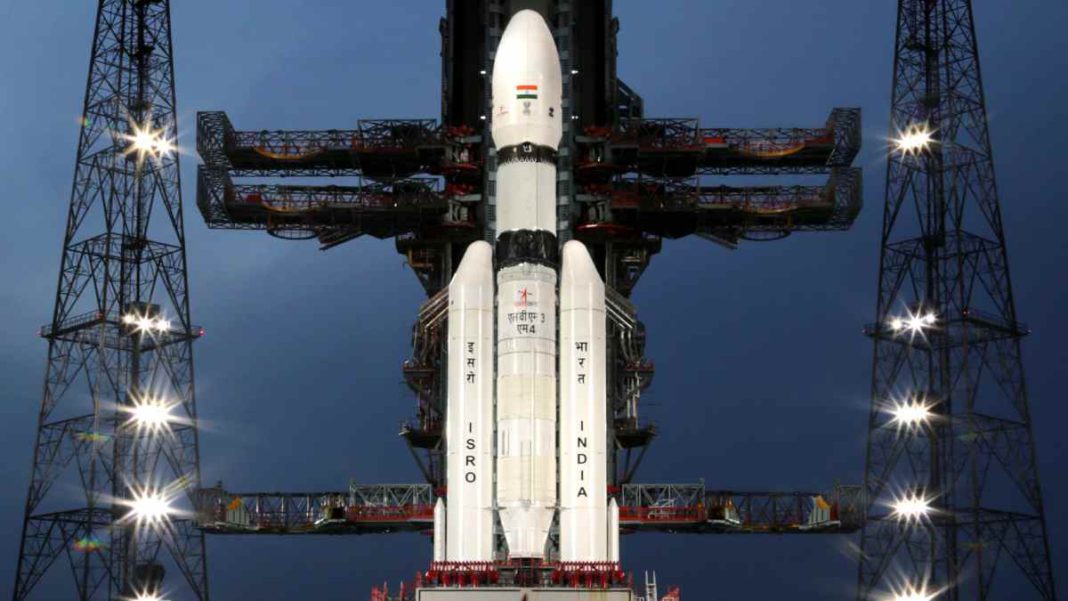INDIA: India is poised to make history as it prepares for the launch of Chandrayaan-3, the country’s third lunar mission, scheduled to take place today at 2:35 p.m. from the Satish Dhawan Space Centre in Sriharikota.
With a successful landing, India will join the esteemed ranks of nations that have achieved this remarkable feat, including the United States, China, and the former Soviet Union.
Chandrayaan-3 is a significant endeavour for the Indian Space Research Organisation (ISRO) following the crash-landing of Chandrayaan-2 in September 2019 due to a communication glitch.
Learning from past experiences, ISRO has implemented several improvements in Chandrayaan-3 to ensure a flawless mission this time around. The mission aims to land on the Moon on August 23, marking a significant milestone for India’s space exploration efforts.
Chandrayaan-3, which consists of an indigenous propulsion module, a lander module, and a rover module, aims to create and showcase cutting-edge technology needed for upcoming interplanetary missions.
The lander and rover will be transported from the injection orbit to a lunar orbit of about 100 km by the propulsion module. In addition, the mission carries the Spectro-polarimetry of Habitable Planetary Earth (SHAPE) payload, which will enable the study of Earth’s spectral and polarimetric measurements from the vantage point of the Moon’s orbit.
The success of Chandrayaan-3 holds immense significance for India, as it not only elevates the nation’s standing in the global space industry but also paves the way for advancements in space science within the country.
Nambi Narayanan, a former ISRO scientist, expressed his belief that a successful landing would position India as the fourth nation to achieve this milestone, boosting the potential for further space science development and increasing India’s share in the $600 billion industry, which currently stands at a modest 2 percent.
ISRO Chairman S. Somanath highlighted a notable change in the mission’s design philosophy. Unlike Chandrayaan-2, which followed a success-based design approach, Chandrayaan-3 adopts a failure-based design strategy, focusing on identifying potential failures and implementing necessary safeguards to ensure a successful landing on the lunar surface.
While Chandrayaan-2 consisted of the Vikram lander, Pragyan rover, and an orbiter, Chandrayaan-3 will launch with just a lander and a rover. The orbiter from Chandrayaan-2 will be repurposed for communication and terrain mapping requirements during the Chandrayaan-3 mission, minimizing redundancy and maximizing mission efficiency.
The Chandrayaan-3 lander is equipped with “lander hazard detection and avoidance cameras,” which facilitate coordination with the orbiter and mission control during the landing process on the lunar surface.
This advanced technology ensures precise navigation and safeguards against potential hazards, further increasing the mission’s chances of success.
To enhance landing flexibility, the area designated for the landing has been expanded from 500m x 500m to an impressive 4 km by 2.5 km. This expansion allows for adjustments in landing location, reducing dependence on targeting a specific point, and accommodating variations in performance during the descent.
The Chandrayaan-3 mission also carries an increased amount of fuel, providing greater capability for travel, dispersion management, and the ability to shift to an alternate landing site if necessary.
In order to provide continuous power generation independent of the landing orientation, the Vikram Lander features additional solar panels installed on various surfaces.
As the countdown to the historic launch of Chandrayaan-3 reaches its final moments, the scientific community and people across India eagerly await the outcome of this mission.
With the promise of technological advancements, scientific discoveries, and increased global recognition, India’s moon mission represents a significant leap forward in the nation’s ambitious space program.
Also Read: ISRO Scientists Seek Blessings at Tirupati Temple as Chandrayaan-3 Moon Mission Countdown Begins



